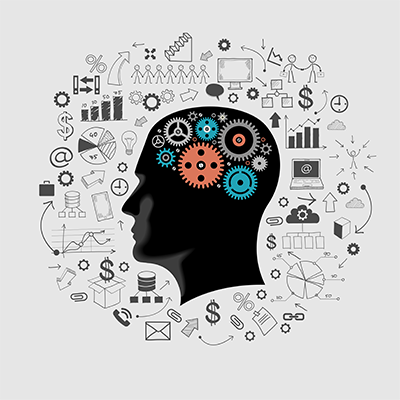“In the world of Internet Customer Service, it’s important to remember your competitor is only one mouse click away” – Doug Warner
Aha! How easy is it for the customer? As well, how risky a proposition is it for the service provider?
From a glance at Top-100 Exponential Organizations (EXOs) list, here is example of what each of them has distinguished themselves as fast growth EXOs –
- GitHub, a web-based company, offers code hosting ‘services’ for collaborative software development.
- Google is a multinational corporation specialized in internet-related ‘services’ and products
- WhatsApp is a proprietary, cross-platform, free instant messaging subscription ‘service’ for smartphones.
- Evernote is a suite of software and ‘services’ that allow users to capture, organize, and find information across multiple platforms
- Zynga provides social game ‘services’ and develops social games for smartphones, websites and social websites
In looking closely, they each render a varied specific service that differentiates them from the other and have a success story on the journey they traversed. There is commonality on the aspect of offering, ‘as-a-service’. XaaS (Anything-as-a-Service/Everything-as-a-Service) has changed how numerous industries run and offer services.
What, Why and How of this XaaS?
Digitization and Globalization are furthering today’s world of XaaS. The industry is fast moving away from the traditional look at, ‘Products/Solutions’ offering ONLY, and expanding to explore a holistic approach of E2E (End-to-End) service offering for a better market segment capture and towards a customer-centric focus.
So true of Einstein’s quote, “We can’t solve problems by using the same kind of thinking we used when we created them,”. The industry has evolved from the initial as-a-service offering of cloud solutions, ie SaaS, PaaS, IaaS, to Communication-as-a-Service, Data-as-a-Service, Compliance-as-a-Service and now to the latest Machine Learning-as-a-Service (MLaaS) & Artificial Intelligence-as-a-Service (AIaaS).
Wow! Artificial Intelligence-as-a-Service (AIaaS)? Machine Learning-as-a-Service (MLaaS)?
Yes!, and when we look through what the driver for this evolution could be? It is a paradigm shift. XaaS is a mindset shift while also is a strategy for the Service Providers rendering respective services.

“The global XaaS market will grow at a compounded annual growth rate of nearly 40% from 2016 to 2020, with services ranging from storage to pet-sitting to food delivery “
In today’s age of Disruptive Innovation and Speed of Change enabling businesses, an essential capability is to have a mindset shift to, ‘Service Thinking’. Thinking that would allow Organizations to concentrate on creating VALUE to customers and in offering a great customer experience by leveraging technology and inherent knowhow.
A Shift towards Service Thinking
Lets’ get to the basic definition of, ‘Service.’ Here, we will look at the definition from ITIL, the world’s most widely-adopted framework for Service Management.
ITIL defines a service as “a means of delivering value to customers by facilitating outcomes customers want to achieve without the ownership of specific costs and risks.”
Here, the customers could be either one-of or both or a combination of internal and external to the Organization depending on its strategy of service offerings. As well, services offered also, could be either one-of or both or a combination of internal and external services.
In this entire gambit of ploy, the utmost aspect that impacts a customer’s satisfaction levels is the ‘VALUE’ of the service. A careful look at VALUE conceals two aspects:
- One aspect where the concept of ‘VALUE’ diminishes over a period. Lets’ take an example here. Apple’s mobile handsets evolved from their 3G model to 3Gs all through towards 4s ->5s->6s->7s->8s to the current iPhone X. At each of the instants the respective model was released, it was the baby cherished and was bygone as the next evolved model was available in the market. So true here, that the concept of VALUE diminishes over a period. Second,
- In relevance to understanding Customer Service and overall customer experience, and gauging the VALUE provided to the customer, it is in the context of not just the business Outcomes the customer wants, but also as a combination of the customer’s perceptions & preferences of the services or products of his/her choice.
Whose responsibility is it to Deliver Value?
As rightly said, “Customers don’t expect you to be perfect. They do expect you to fix things when they go wrong” – Donald Porter
However, delivering value to customers is everyone’s responsibility. A growing Customer Loyalty would then, but be a by-product! This is the One Number Organizations need to focus towards growth.
The aspirational state for businesses as per Steve Jobs –
“Get closer than ever to your customers. So close that you tell them what they need well before they realize it themselves”
Customer First in the Digital Age:
McKinsey in its article [2], “5 questions brands need to answer to be Customer First in the Digital Age”, thus outline the five questions and provides guideline –
The starting point for delivering value is understanding the end-to-end journeys customers undertake to accomplish a task, such as buy a product, open an account, resolve a dispute, adjust a service, etc. These journeys are often complex routes across websites, social media, stores, customer service, and myriad other interaction points.
2. How useful is your data?
Companies have plenty of data about their consumers. They need to centralize the data and create a 360-degree view of the customer that becomes, in essence, the “golden source” of customer insight, or a single view of the customer that the business agrees on and can access.
3. Do you truly understand why your customers are doing what they’re doing?
The best companies leverage behavioral economics and ethnographic research to power user-centered design thinking allowing them to move away from more generic assumptions like demographics too much more nuanced and segmented understanding of customer motivations, requiring investment in time to see how customers make choices in live environments and observe what sorts of behaviors predominate.
4. How relevant are your communications and interactions?
To help drive scale of this activity, companies are beginning to put in place personalization engines. These are data-driven systems that automate decision making, trigger actions based on customer activity, and iterate their communications based on their learnings. Data-activated marketing based on a person’s real-time needs, interests, and behaviors can boost total sales by 15 to 20 percent while significantly improving the ROI on marketing spend across multiple marketing channels.
5. Do you have the right people on your teams (and the processes and guidelines to support them)?
Companies need cross-functional teams. Effective cross-functional teams rely on having the right kind of talent on hand.
Conclusion:
Having a service-oriented inclination to delivery and an empathy to the customer will take a long way to help derive the best of CXI, customer experience index. This would be compounded by customer’s loyalty, where, in essence the customer gets to become the Service Provider’s marketing department. Wow! What a great state to be-IN for the Service Provider Organizations?
But, the journey though possible, is not as easy with reasons attributing to market competition and the diminishing aspect of VALUE. It is here again in today’s age of IoT (Internet of Things), SMAC (Social, Mobile, Analytics and Cloud) and ZMOT (Zero Moment of Truth), the market dynamics play a major impacting role. My subsequent blogs will further outline Service Management & Service Delivery in context to IoT, SMAC, VeriSM and SIAM (Service Integration and Management).
Service thinking for today’s Digital age encompasses the whole gamut of lifecycle for the Service from VALUE creation in Strategy phase to VALUE realization in Operations phase. This encompasses the Service Provider’s journey and an opportunity to the Service Provider to either make or break customer relationship and satisfaction further leading to customer loyalty.
Contact us today to know more about how YASH can help you tackle the challenges that arise during a digital transformation.
Lakshmi Nanduri – Program manger @YASH Technologies
Lakshmi Nanduri
References:
- https://www.forbes.com/sites/danielnewman/2017/06/27/why-the-as-a-service-model-works-so-well-for-digital-transformation/#44913d9d6490
- https://www.mckinsey.com/business-functions/marketing-and-sales/our-insights/five-questions-brands-need-to-answer-to-be-customer-first-in-the-digital-age


















